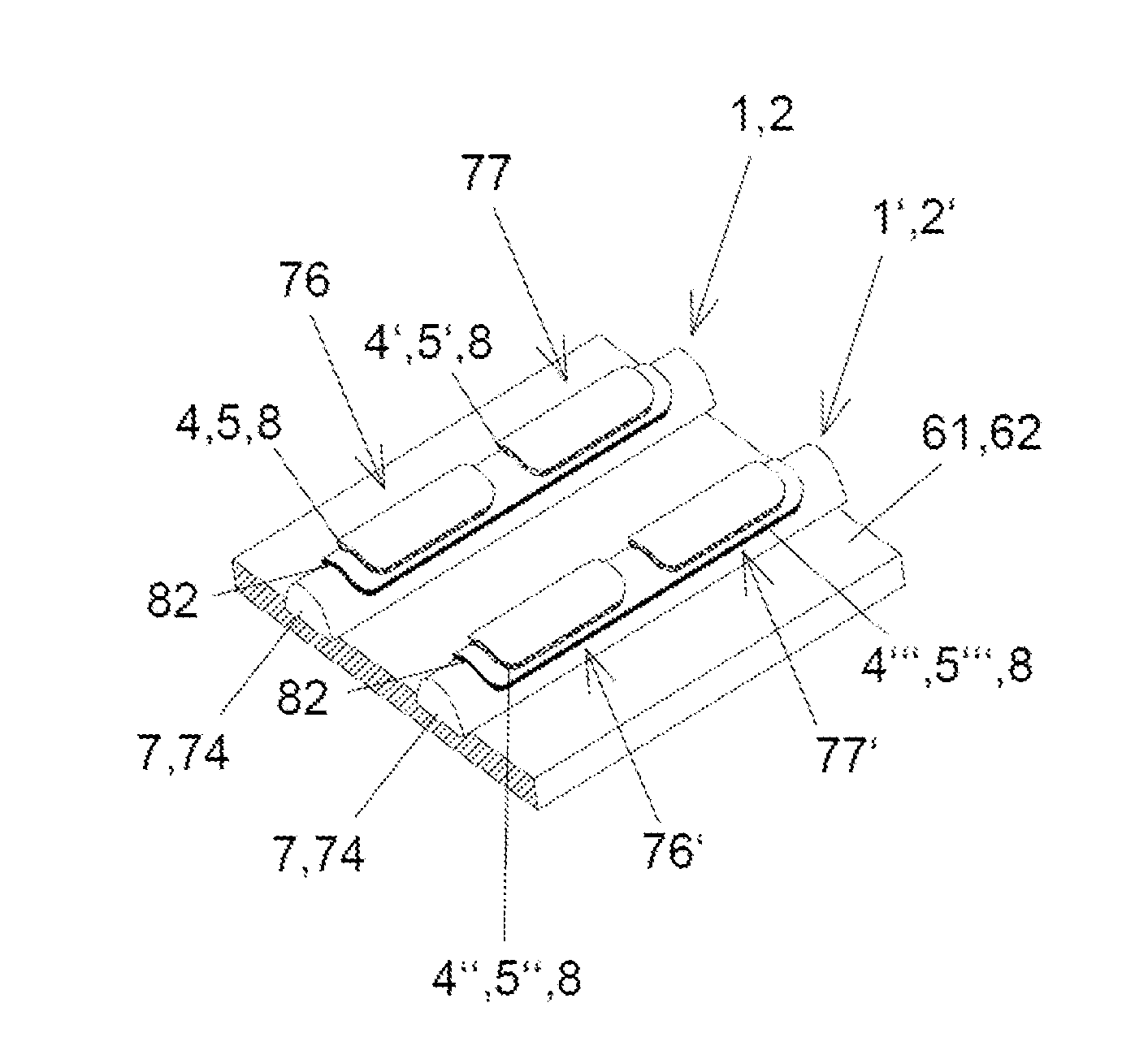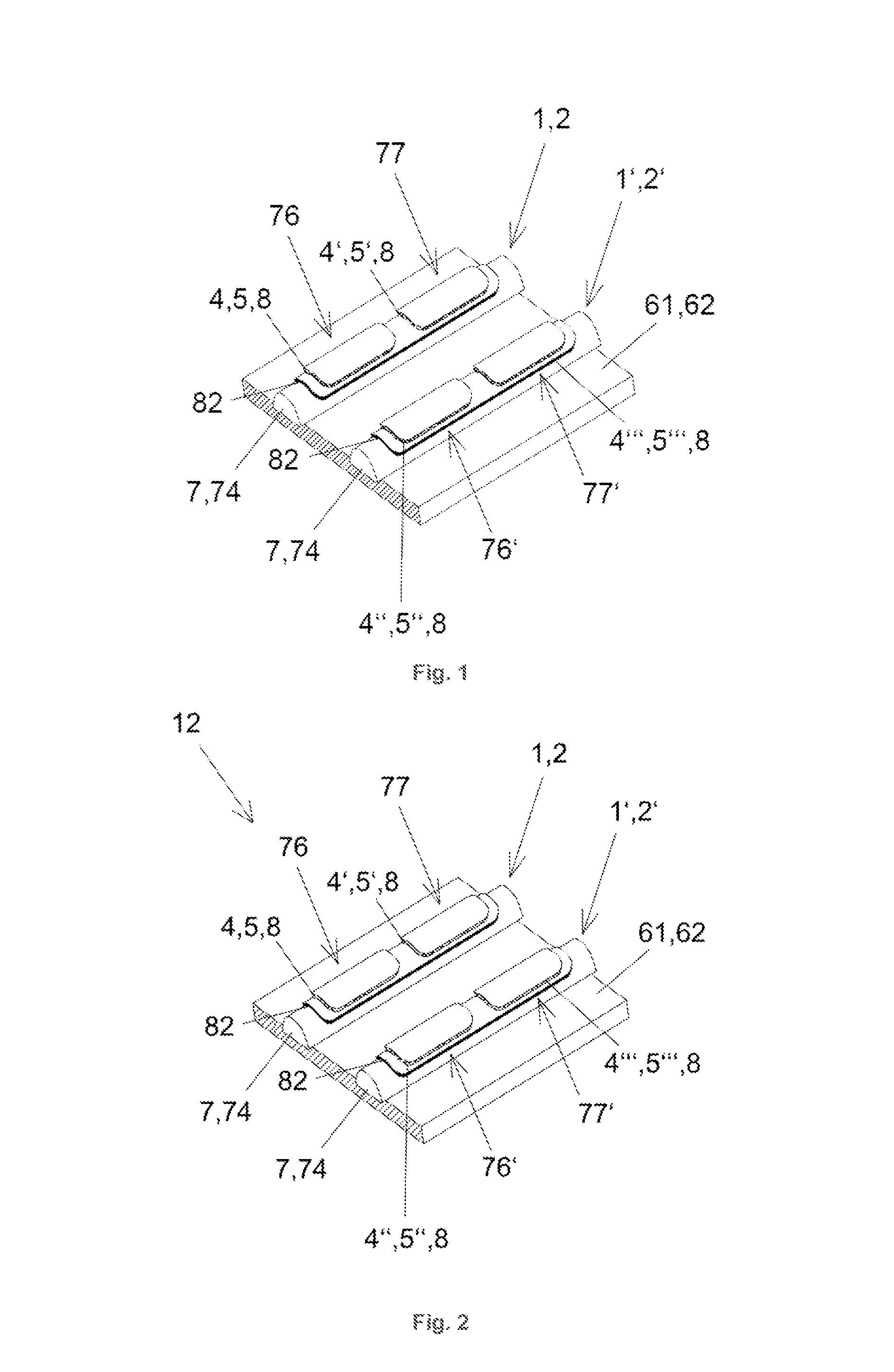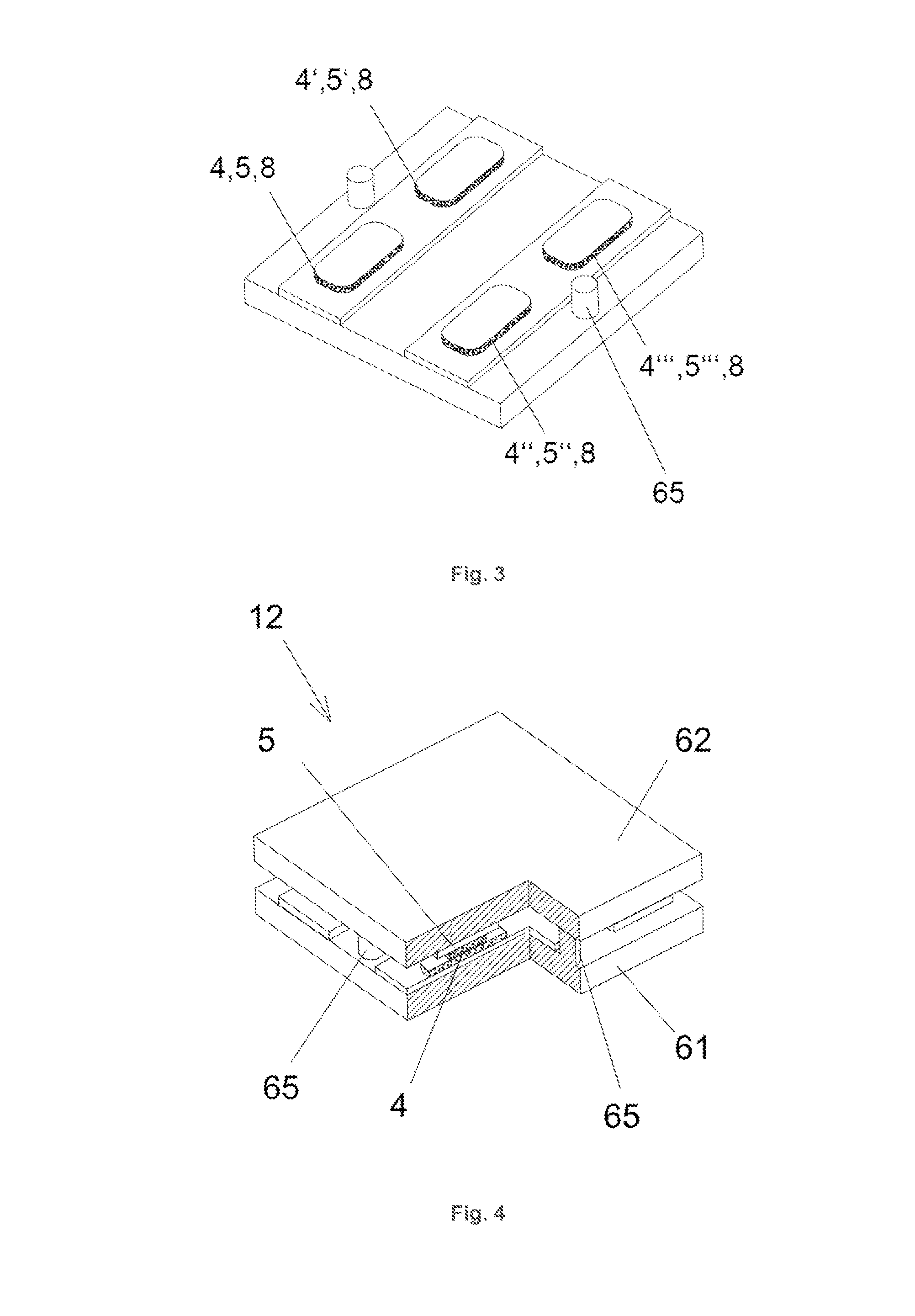Biosensor array formed by junctions of functionalized electrodes
a functional electrode and biosensor technology, applied in the field of biomolecule detection, can solve the problems of only being able to detect low gene expression levels, wasting manpower, time, material consumption and data processing power, and unable to detect transcript isoforms, so as to simplify the process of forming a sensor array
- Summary
- Abstract
- Description
- Claims
- Application Information
AI Technical Summary
Benefits of technology
Problems solved by technology
Method used
Image
Examples
first preferred embodiment
Sensor Arrays with Conducting Sensor Half-Elements which are Supported by Plates and Contain DNA Sensor Compounds
[0094]The first preferred embodiment is shown in FIGS. 1 and 2 and describes a sensor array 12 with linear conducting sensor half elements 1, 2, which are supported by two common carrier 61, 62 formed by plates. In this preferred embodiment of the invention, the sensor compounds are comprised of or comprise oligonucleotides. The analyte entering the measurement cell (not depicted), which surrounds the sensor array 12, is a mixture of cDNA molecules. The junction areas 31 are part of elongated spots, which are arranged along rows and columns of sensor half elements 1, 2. All sensor half elements 1, 2 are arranged in parallel on their respective common carriers 61, 62. One common carrier 61, 62 is depicted in FIG. 1. The functionalization of the sensor half elements 1, 2 occurred before assembling the common carriers 61, 62. During assembly the first common carrier 61 and t...
second preferred embodiment
Sensor Arrays with Transparent Sensor Half Element Glass Fibers and Polypeptide Sensor Compounds
[0141]The second embodiment of the invention describes a sensor array 12 with straight aligned sensor half elements 1, 2 as shown in FIG. 10 or woven sensor half elements 1, 2 as shown in FIG. 11 which are grouped as row 1 and column elements 2. All sensor half elements 1, 2 are identical except their individual functionalizations. The gap between the sensor half elements 1, 2 is caused by the convexly shaped surface of the sensor half elements 1, 2. The sensor half elements 1, 2 are transparent. An optical readout device 141 detects changes in the gap area 31 of the individual sensors 3. The sensor compounds 4, 5 are polypeptides and polynucleotides. The analyte 9 are polypeptides.
[0142]Sensor Half-Elements and their Functionalization
[0143]Commercially available glass fibers of 20 μm outer diameter were chemically activated by silanization to produce amino-reactive layers with N-hydroxys...
examples
Sensor Half Elements Surface Structuring
[0160]The extent of surface interaction can be enhanced through additional soft matter coatings which are grouped in the category carrier material layer 8. Polymers, in particular gels, are suitable to form a coating which can be squeezed. Such coatings contain binding sites to covalently bind the sensor compounds 4, 5. The junction area 31, i. e. the region between two sensor half elements 1, 2 where molecules 9 under investigation can bind to each of the sensor compounds 4, 5 with two of its binding sites 91, 92, can be increased by using said gels. Dendrimers like polypropylenimine polyamine range from tetramines to tetrahexacontamines and can be chosen to build 3D-like structures with higher interface densities of the sensor compounds 4, 5.
[0161]FIG. 5 presents a sensor half element 1, 2 which is supported by a carrier 7 and coated by an insulating layer 82. The different sensor compounds 4, 5 are embedded in a carrier material layer 8 and...
PUM
| Property | Measurement | Unit |
|---|---|---|
| time | aaaaa | aaaaa |
| angle | aaaaa | aaaaa |
| width | aaaaa | aaaaa |
Abstract
Description
Claims
Application Information
 Login to View More
Login to View More - R&D
- Intellectual Property
- Life Sciences
- Materials
- Tech Scout
- Unparalleled Data Quality
- Higher Quality Content
- 60% Fewer Hallucinations
Browse by: Latest US Patents, China's latest patents, Technical Efficacy Thesaurus, Application Domain, Technology Topic, Popular Technical Reports.
© 2025 PatSnap. All rights reserved.Legal|Privacy policy|Modern Slavery Act Transparency Statement|Sitemap|About US| Contact US: help@patsnap.com



